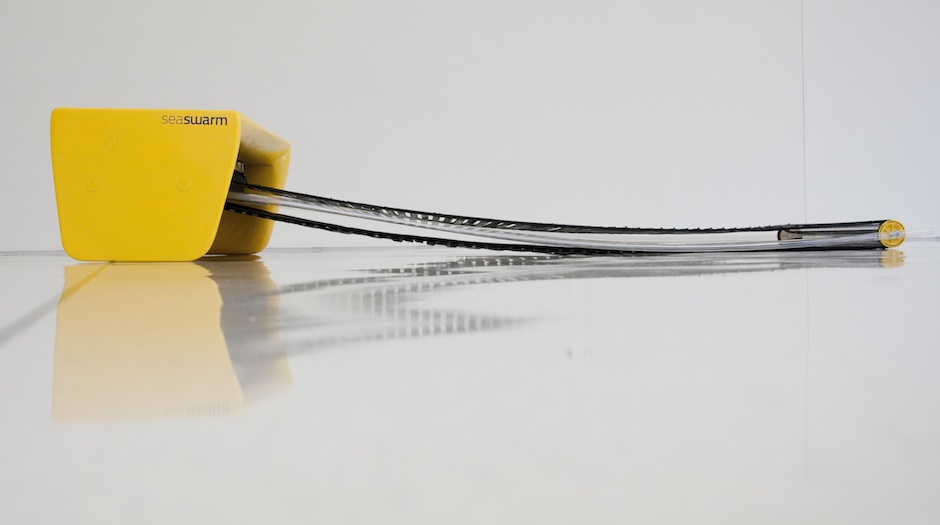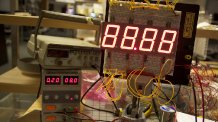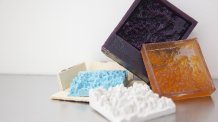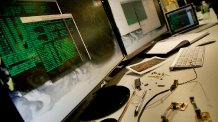Seaswarm

Acknowledgements
Carlo Ratti, Assaf Biderman, Luigi Farrauto, Cesar Harada, Carnaven Chiu, David Anderson, Malima Wolf, Diego Maniloff, Sey Min, Rex Britter, Lindsey Hoshaw, Jennifer Dunnam, David Lee, Dietmar Offenhuber, Jan Kokol, Matthew Kai Johnson Roberson, Walter Nicolino, Giovanni de Niederhausern, Samuel Colle Dominguez Maldonado, Andrea Cassi, Alberto Bottero, Filipa Carvalho
First 10 photos by Kris Krug
Renderings by Adam Pruden
Press Coverage
New York Times
CNN
MSNBC
BBC
Reuters - 8/26/2010
Reuters - 9/1/2010
Los Angeles Times
Boston Herald
Forbes
NPR
Yahoo! News
Popular Science
Discovery News
CNET
Discover Magazine
Scientific American
ComputerWorld
Engadget
Gizmodo
Tech Crunch
Hack A Day
Boy Genius Report
Technorati
Consumer Reports Blog
Beta News
Tech News Daily
MIT News
Business World News
Economic Times
Current TV
How Stuff Works
GOOD
Switched
Live Science
Tree Hugger
India Times
Balkans News
Fast Code Design
Brain Pickings
Mother Nature Network
Inhabitat
Engineering.com
AI Shack
TeKGek
Bot Junkie
Sci Guru
Uber Gizmo
Solar Feeds
Zmarter
PhysOrg
Gizmo Watch
Good Clean Tech
Eco Friend
Green Diary
How Green Works
Nano Werk
Dv!ce
Green Launches
Earth Techling
A Green Living
Hackers Journal Magazine
Nachhaltiger
YMag
Spazio FMG
Tecnografo (in Spanish)
C6.TV (in Italian)
Spazio FMG Video (in Italian)
Italian Network (in Italian)
News Spettacolo (in Italian)
TecZilla (in German)
Kompyulenta (in Russian)
...and over 122,000 other sources
Related Links
Seaswarm at TEDxOilSpill
The official Seaswarm website
SENSEable City Lab
La Biennale di Venezia
“Using the principles of swarm robotics, thousands of such devices, interacting and coordinating with one another using global-positioning and wireless technology, could quickly form “teams” and tackle a burgeoning surface spill with crack efficiency.”
- New York Times
Seaswarm is a new oil-skimming system, developed by MIT’s Senseable City Lab, that can autonomously navigate the water’s surface. Seaswarm units are self organizing and can clean an oil spill more effectively than current methods. Seaswarm uses a photovoltaic (solar) powered conveyor belt made of a thin nanowire mesh to propel itself and simultaneously collect oil. This nanomaterial, patented at MIT, can absorb up to 20 times its weight in oil. As the flexible conveyor belt softly rolls over the ocean’s surface, it propels the unit forward, absorbing oil as it goes.
Seaswarm is intended to work as a fleet, or “swarm” of vehicles, communicating their location through GPS and WiFi, creating an organized system for collection that can work continuously without human support. Since Seaswarm is smaller than commercial skimmers attached to large fishing vessels, they are able to navigate hard to reach places like estuaries and coast lines.
For those who were wondering what subject matter was contained within last months “banned” TEDxOilSpill talk, this would be it.
How it works
Seaswarm detects the edge of a spill and moves inward until it has removed all the oil from a single site. It accomplishes this by analyzing recently collected georeferenced imagery and using GPS to navigate. We are also working on developing on board sensors that can work within our 100W limit and be deployed on board our current prototype. When it has completed cleaning, a unit joins and reinforces others working in other areas. Oil is “digested” locally so that Seaswarm does not need to make repeated trips back to shore, a practice that can dramatically slow cleaning time.
Each Seaswarm robot is comprised of a head, which is covered by a layer of photovoltaic cells, and a nanowire covered conveyor belt. The photovoltaic cells generate enough electricity to keep the fleet moving for several weeks and provide the energy to propel the vehicles forward. As the head moves through the water the conveyor belt constantly rotates and sucks up pollution. The nanowire-covered belt is then compressed to remove the oil. As the clean part of the belt comes out of the head it immediately begins absorbing oil, making the collection process seamless and efficient.
This process is more streamlined than current ocean-skimming technologies because the robots can operate autonomously and don’t need to return to the shore for constant maintenance. As the vehicles work in unison they can cover large areas and by communicating with each other and researchers on land, they can coordinate their collection efforts. Measuring just 16 feet long by seven feet wide, the fleet can access hard to reach places like coastlines and estuaries.
“Using the principles of swarm robotics, thousands of such devices, interacting and coordinating with one another using global-positioning and wireless technology, could quickly form “teams” and tackle a burgeoning surface spill with crack efficiency. Indeed, the researchers note that one of the problems SeaSwarm aims to overcome is the overwhelming amount of equipment and human coordination needed to combat a spill.
A robotic S.W.A.T. team 5,000 to 10,000 units strong, responding to real-time satellite data about the presence of oil, could lap up a surface spill like BP’s Macondo spill within a month, the researchers said.
“If produced in large numbers, we believe that each unit should cost no more than $20,000,” Mr. Ratti said. That means that a leak similar in size to the BP spill could be contained for $100 million to $200 million — assuming the robots worked as advertised.
A swarm of 10,000 such units, working together, could tackle a Macondo-sized oil spill in a month, the developers say.
In one design, Mr. Ratti explained by e-mail, the devices burn the oil they collect, so they can continue working uninterrupted. An alternative design, he said, would have individual robots occasionally breaking away to deposit their oil in large, GPS-tagged floating reservoirs. A tanker could come and fetch the oil later.”1
The first Seaswarm prototype was tested in the Charles River in mid-August 2010. The vehicle’s flexible conveyor belt easily adapted to surface waves and succesfully propelled itself through the water. Stay tuned for future prototype updates.
Nanofabric
MIT scientists recently unveiled a nanowire fabric capable of absorbing up to 20 times its weight in oil. This entirely hydrophobic material is resistant to water but can remove lipids like oil from the ocean. Then the fabric can be heated so the oil can be removed. Once the oil is removed, the nanowire mesh can be recycled again and again. The nanowire mesh is so thin that the fabric looks and feels like paper. This weightless quality helped the team come up with the idea to build a vehicle that could smoothly glide over the surface of the water. Like a paper towel, Seaswarm uses this thin nanofabric to seamlessly suck up surface spills.
Exhibitions
Seaswarm is being previewed at the Venice Biennale where you can see the prototype on display starting August 29, 2010. The theme for this year’s architecture exhibit is nanotechnology in the year 2050. The Senseable team interpreted this theme broadly and in reaction to the current situation in the gulf wanted to envision how nanotechnology may become a pervasive tool in future disaster response systems.
As part of the exhibit, the team has constructed an interactive installation where viewers can clean a virtual ocean after an oil spill by moving their hands over the surface of the water. This rapid clean up method is intended to simulate the simplicity and ease with which Seaswarm will be able to clean large oil spills.
The 12th Annual International Architecture Exhibition will run from August 29, 2010-November 21, 2010.
What I did
While with this project, I helped design and develop the Seaswarm system as well as manufacture the first two pre-prototypes. The first prototype was built by Cesar Harada and I as a proof of concept to test navigation methods. The second was also a proof of concept designed to test the conveyer belt propulsion method.









